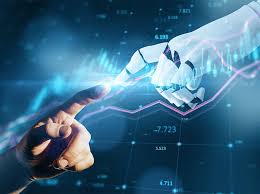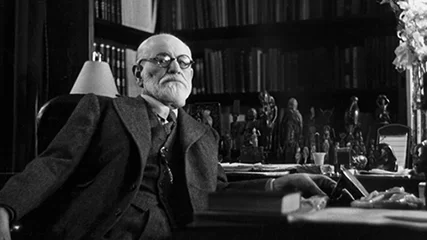Nearly 20 years ago, I took an artificially intelligent cyborg to vacation Bible school.
At the time, I was teaching a Christian ethics class at The Southern Baptist Theological Seminary, and I had my students confront the question of AI in their final exam.
I asked them to imagine their future great-grandson, “Joshua,” as a minister within what used to be called the Southern Baptist Convention (but is now the “Galactic Immersionist Federation”). In this imagined future, Pastor Joshua sits across the desk from Aiden, a little boy going to the church’s summer outreach program. Aiden wants to know how he can become a Christian. He wants to repent of his sins, put his faith in Jesus, and go to heaven when he dies.
The catch: Aiden is manufactured, a Frankenstein’s creation of cloned human body parts with a generative AI mind. The question my students faced was “What would you advise Pastor Joshua to do?” Should he walk Aiden through the answer to the ancient query “What must I do to be saved?” (Acts 16:30). Does the “whosoever” in John 3:16 apply to him—or, should I say, to it?
The point of that final exam was to dislodge students from their tendency to treat ethical dilemmas like a world-view concordance of right answers to premade questions. I wanted to see not so much their answers as how they arrived at their answers—how they integrated the Bible and the gospel into a situation for which they probably didn’t have preexisting slogans.
Today, those students are still far from having great-grandchildren, yet here we all are. We’re on the cusp of what some are calling an “axial decade,” in which advances in artificial intelligence may spur on the contemporary equivalent of the Axial Age (when the emergence of literacy transformed the way human beings exist in the world).
Pastor Joshua might not be born yet, but Aiden is here. And the church is not ready. Indeed, to talk seriously about AI is to risk causing the same reaction that many of my students had to their final—categorizing it as futuristic science fiction. But the root of our unreadiness is not that we don’t adequately understand what a chatbot is. It’s that we don’t sufficiently understand what a human being is.
The crisis of our age is a radical reducing of human life to a flow of data and information, so much so that some tech pioneers suggest eternal life can be achieved by uploading our minds to a digital cloud. Douglas Rushkoff describes this mindset as “the belief that we can code our way out of this mess,” presuming that in a world of code, “anything that isn’t yet code can eventually be converted to a digital format as easily as a vinyl record can be translated to a streaming file.”
Christians, of course, have a distinctive view of the human person as imago Dei—made in the image and likeness of God (Gen. 1:27). The problem is that modern Christians often unintentionally speak of this distinctiveness in terms just as machinelike as those used by the world around us.
We try to identify what “part” of us bears the image. We are morally accountable, we say, unlike other animals—and that’s true, but the Bible tells us there are other morally accountable beings in the universe (1 Cor. 6:3). Or we point to our ability for relationship—and that’s true also, but what does that say when people fall in love with their chatbots?
Perhaps most problematically, we speak of the imago Dei as our rationality, our ability to think and to reason. But intelligence has never been exclusive to human beings. The Serpent of Eden is described as “crafty” or “cunning” (Gen. 3:1; 2 Cor. 11:3), and the apostle Paul spoke of the “schemes” of the Devil (Eph. 6:11, ESV throughout).
After Genesis, though, the Bible doesn’t further define the concept of the image of God until the New Testament. Even then, it defines that image not as a what or a how but a who.
Jesus, Paul wrote, is “the image of the invisible God” (Col. 1:15). The Incarnation means that Jesus joined us in flesh and blood, in our suffering and creatureliness, in order to free us from our captivity to the power of death (Heb. 2:14–15).
All creation is meant, somehow, to recognize humanity as signifying the reign of God (Rom. 8:19). And in the flesh-and-blood person of Jesus, it does. Even the molecular structures of fish and bread obey him and multiply. In strikingly personal terms, Jesus says, “Peace! Be still!” to the wind and waves, and they respond (Mark 4:39).
Paul speaks of creation as revealing the “invisible attributes” of God (Rom. 1:20) in ways that mirror the concept of the image of God. This is not the potential to trace philosophical arguments from the order of the world back to God; the Bible says this revelation to humanity is “plain to them, because God has shown it to them” (v. 19). Something in our being is meant to resonate with the awe and mystery of the world, triggering us to recognize something—someone—behind the veil of what we can see.
The church in the AI age must recognize that to be human is not about “stuff” that can be weighed or quantified. We must understand that there’s a mystery to life that cannot be uploaded or downloaded or manipulated by technique. Simply recognizing this in an age of smart machines is a good start.
The world has always asked what the meaning of human life is. It is about to start asking what it means to be human at all. That’s a final examination question for us all.
A robot can give an answer, but that’s not enough. We should point to a Person. And in an age of artificial intelligence, as always, that will be strange enough to save.
*Russell Moore is editor in chief at CT.
This article appeared in the July/August 2025 issue of Christianity Today as “A Different Image of God for an Era of AI”.
Source: https://www.christianitytoday.com/2025/07/image-god-ai-era-artificial-intelligence-russell-moore/






